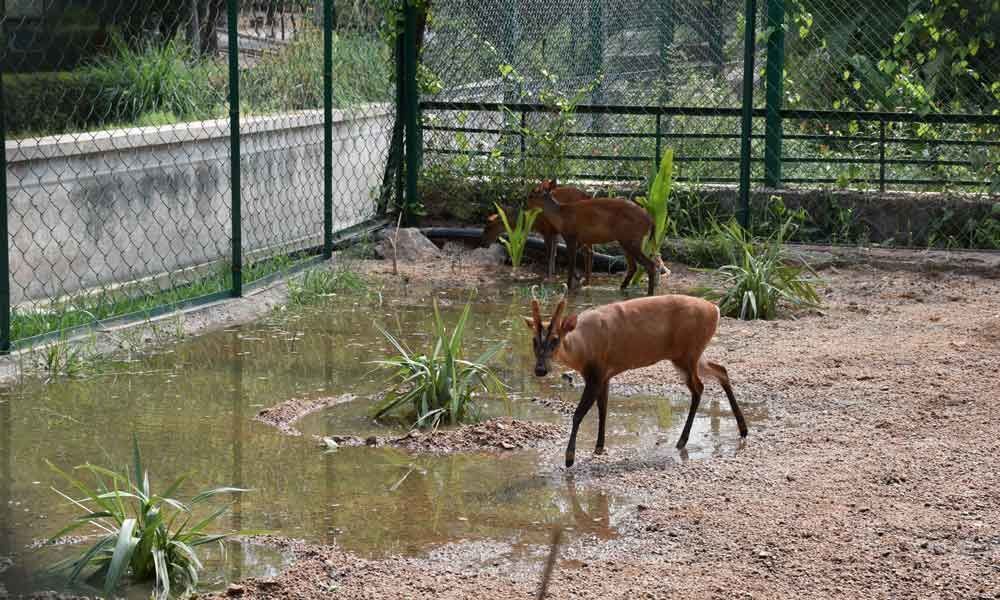Live
- YSRCP stir for MSP today
- Direct flights from Rajahmundry to major cities soon
- Search intensified for Gowtham Reddy as HC dismisses his bail plea
- Santosh Trophy final round to begin in Hyderabad tomorrow
- BGT: Rohit must return to opening for Brisbane Test, says Ponting
- Swimming sensation Havya steals the show
- NDTL gets WADA nod to manage Athlete Biological Passport
- BWF World Tour Finals: Treesa-Gayatri wins 2nd match to keep semis hopes alive
- Youngest ever to conquer chess world
- Jamie Lever to star in Lakshmi R Iyer’s ‘2050’: It challenged me emotionally
Just In
Get to hear hoarse barking calls of deers


There are new species of mammal in Nehru Zoological Park, waiting to welcome the enthusiastic animal lovers and visitors henceforth. They are none other than the ‘Barking Deers’ having lineage with the mammal species of deer. They are also known as Indian Muntjac with a scientific name (Muntiacus Muntjak) a native to South and Southeast Asia.
Bahadurpura: There are new species of mammal in Nehru Zoological Park, waiting to welcome the enthusiastic animal lovers and visitors henceforth. They are none other than the 'Barking Deers' having lineage with the mammal species of deer. They are also known as Indian Muntjac with a scientific name (Muntiacus Muntjak) a native to South and Southeast Asia.
"When you come across these species in the sanctuary you may think that you have seen them earlier, too, but they are different and the exceptional peculiarity in them you are unaware of is their vigilant attitude. If frightened, they would start barking unlike their fellow kindred which would run out of the scene if they sense any threat or danger," said N Kshitija, Curator, Nehru Zoological Park.
With regard to their physical appearance, the male barking deer have canines, short antlers and a large postorbital scent gland used to mark territories while the females have tufts of fur and small bony knobs instead of antlers. Males also have elongated (2–4 cm), slightly curved upper canines, which can be used in male-male conflicts and inflict serious injury. The body length of barking deer's varies from 89–135 cm and height ranges from 40–65 cm. The muntjacs, unique among the deer, have large, obvious facial (preorbital, in front of the eyes) scent glands used to mark territories or females. Males have larger glands than females.
Muntjacs are a particularly vocal type of deers. Their hoarse barking calls are commonly heard both day and night in forests, woodlands and grasslands wherever they are present. Female barking deer often call to attract males when they are in season. They often stand in one place for some time barking repeatedly. Muntjacs also make a similar barking call when they sense danger. Their haunting sound at night often frightened people who always fear of will-o-the-wisp.
These species were born and brought up in the zoo park itself and were put to display recently in a separate enclosure. "Since these two yoked were born to already available "barking deer" in the zoo park, the need to undergo with the quarantine process doesn't arise. We have made a separate enclosure for these mammals and put two pair of the species on to display recently," informed Hanifullah, the PRO of Nehru Zoological Park.

© 2024 Hyderabad Media House Limited/The Hans India. All rights reserved. Powered by hocalwire.com






